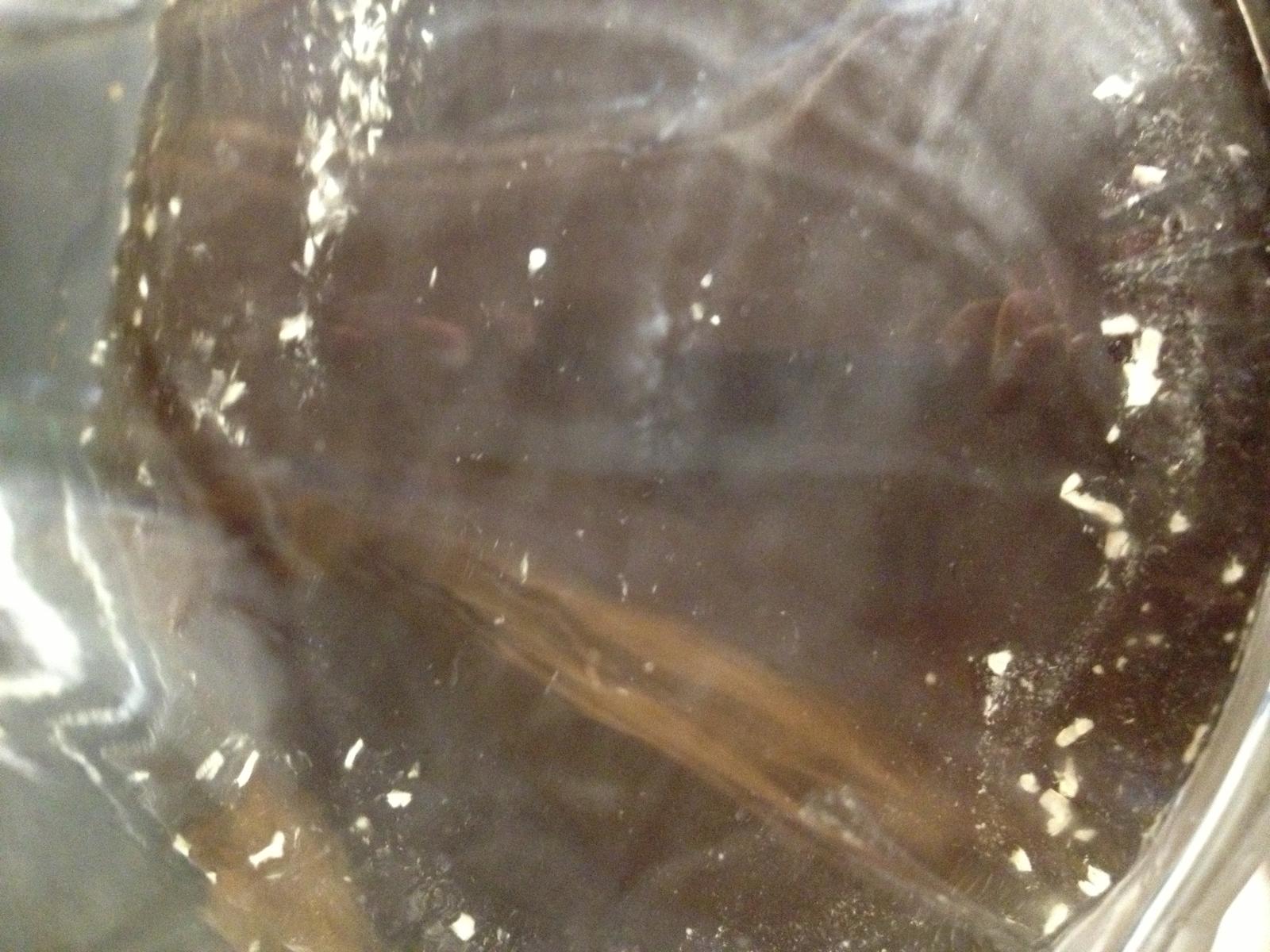I've had that a time or two. Whatever it was is going belly up in the co2-rich environment. So it must not've been that bad.



So I got what I believe to be a wild yeast or something that can live (& ruin) a 9% abv beer.
All my fermentors are plastic. Is bleach a viable option? If so how should I go about it?
If not... :\
So I got what I believe to be a wild yeast or something that can live (& ruin) a 9% abv beer.
All my fermentors are plastic. Is bleach a viable option? If so how should I go about it?
If not... :\
Any idea what the white stuff is. It still smells like beer. I'm goin to bottle anyway once I get enough bottles. It is a traditional roggenbier that was in primary for 2 weeks and in the secondary for 1 week.
That is a pellicle, and a pretty one at that. Also a sign that you have an infection, possibly Brett or Lacto.
Be careful bottling, make sure the gravity is stable, etc. If you don't want the infection to develop, you may want to drink it quickly. Or you could embrace the infection, pitch some sour bottle dregs and let it ride in secondary, if you're into that.
If i kegged and force carbed it how long will it last u think?
Looks like it could be yeast rafts.



That's the best picture I can get.
Did you use a muslin hop sack? Did you soak it in Starsan for a while? Sometimes I think even a well-sanitized hop sack gives the nasties already present something to anchor to.
Looks like normal krausen to me, but if it tastes vinegary, then it's infected.
Although I've never had a contaminated batch of anything, I'm not a big fan of dry hopping for exactly this reason; it's a potential avenue for introduction of contaminants. Your beer was fine until you tossed those hop pellets in...

Hard to tell based on these pics Chris. Gotta shine a light in there or something, its too dark.


View attachment 222657
Smells horrible! Session IPA that I dry hopped with cascade was just tryin somthing different
Sent from my iPad using Home Brew
Enter your email address to join: